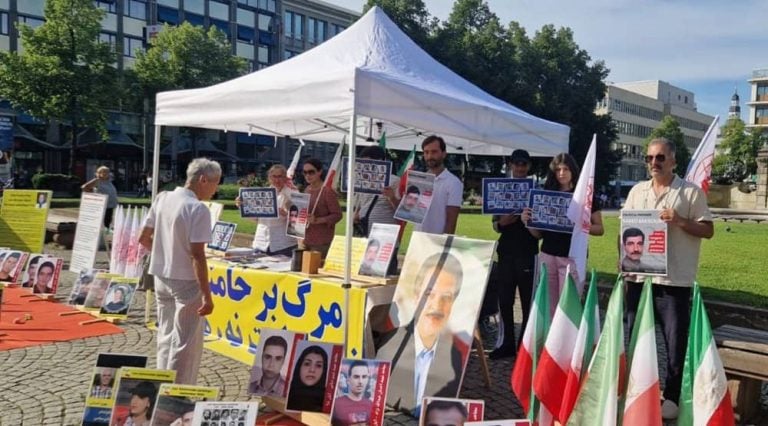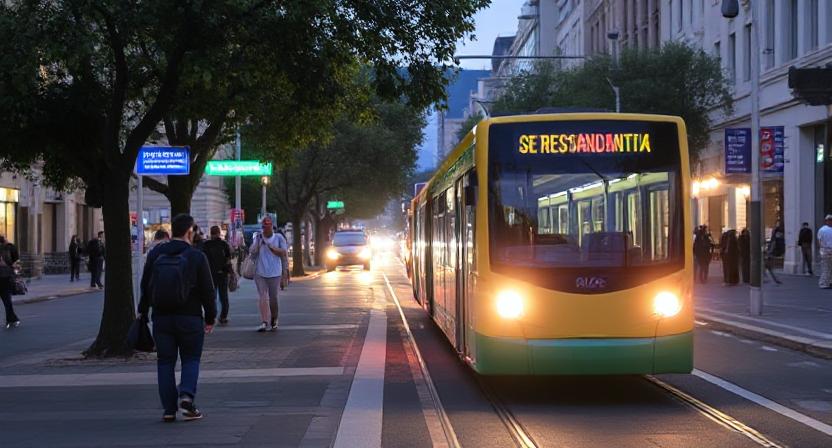“Digital Caste System”: Iran Codifies Internet Access by Loyalty – National Council of Resistance of Iran – NCRI

Report on Iran’s Tiered Internet Policy and its Conflict with Sustainable Development Goals
A policy approved by Iran’s Supreme Council of Cyberspace on July 15, 2025, establishes a tiered system of internet access. This report analyzes the policy, its implementation, and its profound conflict with multiple United Nations Sustainable Development Goals (SDGs), particularly those concerning equality, infrastructure, justice, and economic growth.
Policy Framework: A “Digital Caste System”
The new regulation codifies a discriminatory system for internet access, creating a digital divide based on political loyalty. This framework fundamentally undermines the principle of universal access to information.
Key Features of the Tiered System
- Privileged Access: Unfiltered, high-speed internet is granted to individuals and groups deemed loyal to the state, including security agencies and propagandists.
- Restricted Access: The general public is relegated to a heavily censored, monitored, and slower national network.
- State Control: The system serves as a tool for political control, enabling the state to disseminate its narrative while suppressing dissent, as observed during recent conflicts and protests.
Official Contradictions
The policy’s rollout has been marked by conflicting statements from officials. While President Masoud Pezeshkian stated that “access to free information is the right of all people,” his administration approved the plan that negates this principle. Similarly, a government spokesperson denied the regulation was intended to restrict the internet, despite previously admitting that certain groups, like journalists, would require preferential access.
Direct Opposition to Sustainable Development Goals (SDGs)
The tiered internet policy represents a significant regression from the global consensus on sustainable development, directly contravening several key SDGs.
Violation of SDG 10: Reduced Inequalities
The policy institutionalizes inequality, in direct opposition to SDG Target 10.2, which calls for the social, economic, and political inclusion of all. By creating a “digital caste system,” the regime is actively deepening societal divisions and ensuring that access to information and opportunity is contingent on political affiliation rather than being a universal right.
Undermining SDG 9: Industry, Innovation, and Infrastructure
The regulation is a direct assault on SDG 9, which aims to build resilient infrastructure and foster innovation. Specifically, it violates the spirit and letter of Target 9.c, which seeks to provide universal and affordable access to the internet. Instead of fostering an environment for technological and economic growth, the policy cripples the digital economy for ordinary citizens and stifles innovation.
Contradiction of SDG 16: Peace, Justice, and Strong Institutions
The policy severely undermines SDG 16 by dismantling mechanisms for accountability and access to information.
- Erosion of Fundamental Freedoms: It directly contravenes Target 16.10, which aims to “ensure public access to information and protect fundamental freedoms.” The system is designed explicitly to limit these freedoms.
- Lack of Accountable Institutions: By rewarding loyalists and punishing the general populace, the policy weakens the development of effective, accountable, and transparent institutions (Target 16.6).
Negative Impact on SDG 4 (Quality Education) and SDG 8 (Decent Work and Economic Growth)
Restricted internet access limits educational resources for students and researchers and cripples the potential of the online economy, hindering progress toward quality education and inclusive economic growth.
Systemic Suppression and Societal Backlash
The regime is taking comprehensive measures to enforce this digital enclosure, indicating its function is primarily the suppression of its citizens.
War on Alternative Access
To ensure the digital prison is inescapable, the government is actively working to eliminate alternatives like the Starlink satellite internet service.
- A formal complaint was filed with the International Telecommunication Union (ITU) against Starlink’s “illegal” operation.
- Parliament passed legislation criminalizing the use, sale, or possession of Starlink equipment, with penalties of up to two years in prison.
Internal Warnings and Public Reaction
The policy has generated significant backlash within Iran. The state-affiliated outlet Eghtesad 24 warned that the discriminatory plan could provoke a “social explosion,” highlighting the regime’s awareness of widespread public anger. This internal criticism underscores the view that the policy is not a technical adjustment but a desperate measure by a government to control a populace that desires freedom and equitable access to the global community.
Analysis of SDGs in the Article
1. Which SDGs are addressed or connected to the issues highlighted in the article?
The article discusses issues that are directly relevant to several Sustainable Development Goals. The implementation of a “tiered internet” system in Iran, which creates a “digital caste system,” touches upon fundamental principles of equality, access to information, economic opportunity, and technological infrastructure.
- SDG 10: Reduced Inequalities: The article’s central theme is the creation of a discriminatory system where internet access is based on loyalty to the regime. This policy institutionalizes inequality by creating different classes of citizens with varying rights to information and technology.
- SDG 16: Peace, Justice and Strong Institutions: The policy is described as a “strategic act of repression” designed for “political control.” By restricting access to information, monitoring dissent, and suppressing fundamental freedoms, the regime is undermining the principles of justice and accountable institutions.
- SDG 9: Industry, Innovation and Infrastructure: This goal promotes inclusive and sustainable industrialization and aims to increase access to information and communications technology (ICT). The article highlights a policy that directly contradicts the goal of providing universal and affordable internet access, instead using infrastructure as a tool for control.
- SDG 8: Decent Work and Economic Growth: The article explicitly states that the tiered internet system is designed to “cripple the online economy for ordinary citizens.” By limiting access to the global internet, the policy hinders economic opportunities, innovation, and productivity that rely on digital platforms.
2. What specific targets under those SDGs can be identified based on the article’s content?
Based on the issues discussed, several specific SDG targets are being directly undermined by the policies described in the article.
- Target 10.2: “By 2030, empower and promote the social, economic and political inclusion of all, irrespective of… or other status.” The article describes a policy that does the opposite, creating a “digital caste system” that excludes the “general public” from unfiltered internet access based on their perceived loyalty, thereby hindering their social, economic, and political inclusion.
- Target 10.3: “Ensure equal opportunity and reduce inequalities of outcome, including by eliminating discriminatory laws, policies and practices…” The “tiered internet” is presented as a codified discriminatory policy that institutionalizes unequal opportunities, granting “privileged, unfiltered access to regime loyalists” while restricting it for everyone else.
- Target 16.10: “Ensure public access to information and protect fundamental freedoms, in accordance with national legislation and international agreements.” The article details a systematic effort to violate this target. The regime is “isolating the Iranian people from the free flow of information,” creating a “heavily censored and monitored national network,” and criminalizing alternatives like Starlink to prevent public access to information and suppress freedoms.
- Target 9.c: “Significantly increase access to information and communications technology and strive to provide universal and affordable access to the Internet…” The policy moves away from universal access, making it a “privilege granted by security agencies” rather than a universal right. It creates deliberate barriers to access for the majority of the population.
- Target 8.2: “Achieve higher levels of economic productivity through diversification, technological upgrading and innovation…” The article notes that the policy will “cripple the online economy for ordinary citizens.” This directly impedes economic productivity and innovation that depend on free and open access to digital technologies and the global internet.
3. Are there any indicators mentioned or implied in the article that can be used to measure progress towards the identified targets?
The article provides qualitative and policy-based indicators that can be used to measure the regression from the SDG targets.
- Indicator for Target 10.2 & 10.3: The primary indicator is the existence of the “tiered internet” policy itself, which was approved by the Supreme Council of Cyberspace. The distinction between the “privileged” class (regime loyalists, certain journalists) and the “general public” serves as a direct, albeit non-quantitative, measure of state-sanctioned inequality in access to technology.
-
Indicator for Target 16.10: The article points to several negative indicators:
- The formal approval of the “tiered internet” policy, which codifies restrictions on public access to information.
- The law passed by parliament that “criminalizes the use, sale, or possession of Starlink equipment, with penalties of up to two years in prison.” This is a clear legal measure against fundamental freedoms.
- The practice of implementing internet “blackouts” during periods of unrest, such as in “November 2019” and the “recent 12-day war,” serves as an indicator of the restriction of information access.
- Indicator for Target 9.c: An implied indicator is the proportion of the population with access to the global, unfiltered internet versus a “heavily censored and monitored national network.” The article suggests this proportion is being deliberately skewed to favor a small, loyalist minority.
- Indicator for Target 8.2: A qualitative indicator is the stated effect of the policy, which is to “cripple the online economy for ordinary citizens.” While no figures are given, this points to a negative impact on digital commerce and online businesses, which could be measured through economic data on the digital sector.
4. Table of SDGs, Targets, and Indicators
| SDGs | Targets | Indicators Identified in the Article |
|---|---|---|
| SDG 10: Reduced Inequalities |
10.2: Promote social, economic and political inclusion of all.
10.3: Ensure equal opportunity and reduce inequalities of outcome. |
– Existence of the approved “tiered internet” policy creating a “digital caste system.” – Division of citizens into groups with “privileged, unfiltered access” (loyalists) and those with access to a “heavily censored” network (general public). |
| SDG 16: Peace, Justice and Strong Institutions | 16.10: Ensure public access to information and protect fundamental freedoms. |
– Implementation of internet blackouts during protests (e.g., November 2019). – A new law criminalizing the use, sale, or possession of Starlink equipment. – The state’s formal complaint to the ITU against Starlink for providing “illegal” service. – The system is designed to “monitor dissenters.” |
| SDG 9: Industry, Innovation and Infrastructure | 9.c: Significantly increase access to ICT and strive to provide universal and affordable access to the Internet. |
– The policy of providing access as a “privilege” rather than a universal service. – Implied indicator: The proportion of the population with access to the global, unfiltered internet is being actively reduced. |
| SDG 8: Decent Work and Economic Growth | 8.2: Achieve higher levels of economic productivity through technological upgrading and innovation. |
– The stated intent and effect of the policy is to “cripple the online economy for ordinary citizens.” – The creation of a corrupt system where the regime can “sell access, further enriching its cronies,” instead of fostering broad economic growth. |
Source: ncr-iran.org

What is Your Reaction?
 Like
0
Like
0
 Dislike
0
Dislike
0
 Love
0
Love
0
 Funny
0
Funny
0
 Angry
0
Angry
0
 Sad
0
Sad
0
 Wow
0
Wow
0


































































![Governing Health -Compensation Considerations for Health System Innovation Activities [Podcast] – The National Law Review](https://natlawreview.com/sites/default/files/styles/article_image/public/2025-10/Health AI Security Privacy Data Cyber Medical Doctor-309772690.jpg.webp?itok=i51uHMDx#)









